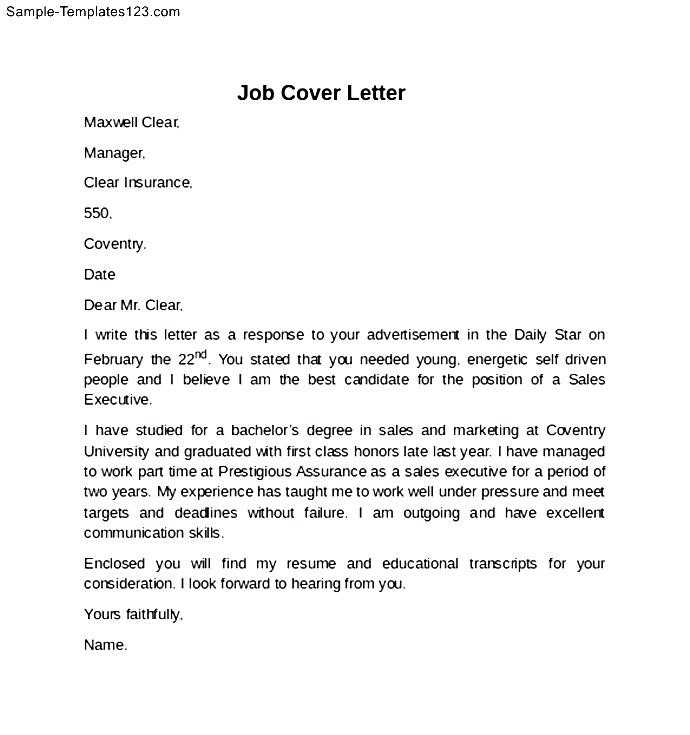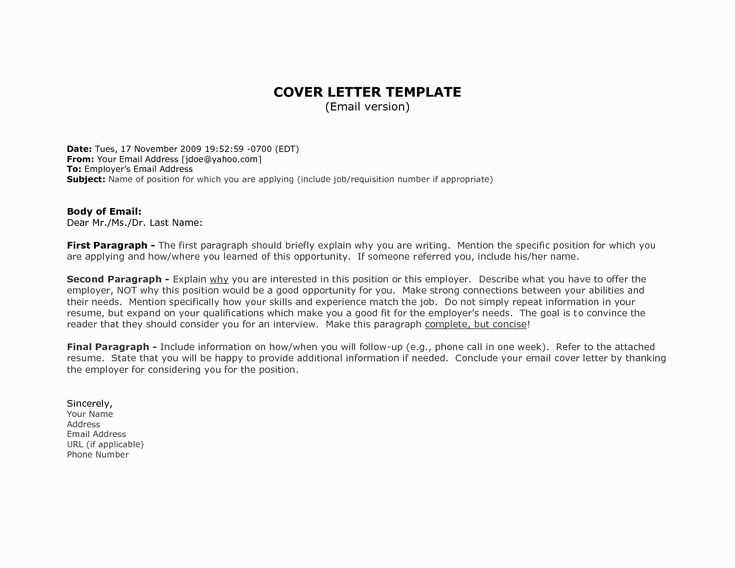Cover letter template best

Start by tailoring your cover letter to the job you’re applying for. Focus on addressing the key qualifications listed in the job description and highlight how your skills meet those needs. A strong opening sentence should immediately grab attention and make a positive impression.
Keep it concise and focused. Avoid unnecessary details that don’t directly relate to the position. Employers often review many cover letters, so getting straight to the point helps make your application stand out. Structure your letter in a way that’s easy to follow, with clear paragraphs that highlight your achievements and skills.
Personalize each letter for the company. Mention something specific about the company that shows you’ve done your research. It could be their values, a recent project, or something notable that drew you to apply. This demonstrates genuine interest and shows that you’re not sending a generic application.
Finally, close with a call to action. Instead of just saying “I look forward to hearing from you,” be more proactive and express your desire to discuss how you can contribute to the company’s success. A confident, polite sign-off leaves a lasting positive impression.
How to Customize a Template for Your Job
Begin by tailoring the header to match your personal details. Replace the placeholder name and contact information with your full name, phone number, and email address. If applicable, include a link to your LinkedIn profile or personal portfolio.
Highlight Relevant Skills

Remove any generic phrases and focus on showcasing the specific skills that are most relevant to the job you’re applying for. Look at the job description and mirror the language and qualifications the employer is seeking. This will demonstrate you’re a strong fit for the position.
Personalize Your Opening Statement
Customize the introductory paragraph to briefly explain why you’re excited about the role. Mention what draws you to the company and how your background aligns with the job responsibilities. Avoid using overly general statements and focus on the specific position.
Key Elements Every Cover Letter Should Include

Start with a professional greeting. Address the hiring manager by name, if possible. Avoid generic greetings like “To Whom It May Concern.” Tailor your salutation to the specific person reading your application.
The opening paragraph should be clear and concise, stating the position you’re applying for and how you learned about the job opportunity. Mention your enthusiasm for the role without over-embellishing.
In the body paragraphs, focus on your skills and experience relevant to the job. Provide specific examples of how your background aligns with the job requirements. Show how you can contribute to the company’s goals.
- Highlight key achievements from previous roles that demonstrate your qualifications.
- Relate your skills directly to the job description, making it easy for the reader to see your fit for the position.
Conclude with a strong closing statement. Express your interest in further discussing the position in an interview. Thank the reader for their time and consideration.
Finally, sign off with a polite and professional closing, such as “Sincerely” or “Best regards,” followed by your name. Include your contact information if it’s not already on your resume.
Choosing the Right Tone for Your Industry
Understand your industry’s communication style. Adjust the tone of your cover letter based on whether you’re applying for a corporate, creative, or technical role. For example, the finance sector values professionalism and formality, while startups may appreciate a more relaxed and innovative approach.
Study job descriptions to identify keywords that reflect the company’s voice. If the company emphasizes collaboration and teamwork, adopt a conversational, approachable tone. If precision and results are highlighted, maintain a clear, direct, and confident tone.
Consider your audience. When addressing hiring managers in more traditional industries, use formal language and avoid slang. In creative fields, however, it’s okay to show personality and creativity while maintaining professionalism.
| Industry | Tone Recommendation |
|---|---|
| Finance | Formal, professional, precise |
| Tech | Confident, direct, detail-oriented |
| Creative | Conversational, innovative, personable |
| Healthcare | Empathetic, respectful, knowledgeable |
Adapt to the company’s culture while staying authentic. Striking the right tone helps create a lasting impression and align with the organization’s expectations. Tailor your approach based on these insights, and you’ll stand out as a strong fit for the role.
Common Mistakes to Avoid in a Cover Letter
Avoid sounding generic. Tailor your cover letter to the specific job you’re applying for. Generic language like “I am passionate about the position” doesn’t show your genuine interest in the company. Research the employer and highlight how your skills align with their needs.
1. Repeating Your Resume
Do not simply summarize your resume in your cover letter. The cover letter should highlight key experiences and skills that relate to the job. Offer insight into your achievements, but don’t repeat what’s already listed in your resume.
2. Ignoring the Job Description
Focus on the job description. Companies look for specific skills and qualifications. If you don’t address those points directly in your cover letter, it might appear you didn’t fully read the job posting.
3. Focusing on What You Want, Not What You Offer
Avoid framing the cover letter around what you want from the job. Instead, explain how you can meet the company’s needs and add value. Highlight how your skills and experience will benefit the team.
4. Using a One-Size-Fits-All Approach
Personalize your cover letter for each application. Sending the same letter for different jobs shows a lack of effort and can hurt your chances. Make each cover letter unique to reflect the company and position you’re applying for.
5. Overlooking Proofreading
Don’t skip proofreading. Errors or typos can make you appear careless. Take time to review your letter for grammar and spelling mistakes. A polished cover letter reflects attention to detail.
6. Being Too Casual
While a friendly tone can work, avoid sounding overly casual. Stay professional and make sure your language is appropriate for the position and the industry.
Formatting Tips for a Professional Look
Use a clean, organized layout. Ensure your cover letter has a clear structure with well-defined sections, making it easy to read at a glance.
- Font choice: Opt for professional fonts such as Arial, Calibri, or Times New Roman. Stick to 10-12 point size for readability.
- Margins: Set standard 1-inch margins on all sides. This ensures your content isn’t crowded and maintains a balanced look.
- Alignment: Align your text to the left. This is the most common and easiest-to-read alignment for professional documents.
- Spacing: Use single spacing for the body of your letter. Add a space between paragraphs for a clean, airy appearance.
Focus on clarity. Avoid excessive formatting and complicated design elements. The goal is to keep the letter looking polished, without distractions.
- Headers: Your contact details should be at the top, followed by the recipient’s details, and the date. This standard format ensures the letter looks professional.
- Consistent formatting: Use bold or italics sparingly to highlight important sections like your name or job title. Too many variations can detract from the professional look.
Maintain uniformity. Ensure alignment, font, and spacing remain consistent throughout the document. A uniform layout helps your letter appear polished and easy to follow.
Examples of Tailored Cover Letters for Different Roles
Personalize your cover letter to match the specific needs of each job. Tailoring helps highlight how your skills align with the company’s goals and demonstrates that you understand the role’s requirements.
For a Marketing Manager Position
Focus on your ability to lead teams and develop strategic marketing campaigns. Highlight achievements like increasing brand visibility or improving customer engagement through specific tools. Mention any experience with market analysis, creative development, and multi-channel strategies. Address the company’s current projects or initiatives and explain how your expertise can contribute to their success.
For a Software Developer Role

Describe your technical proficiency with relevant programming languages. Emphasize past projects or coding challenges that align with the company’s tech stack. Show how your experience with problem-solving and debugging can add value. Refer to any collaborative work you’ve done in agile teams and how you can help improve the company’s software development process.
Remember: Tailoring each cover letter to the role’s requirements makes your application stand out and demonstrates your genuine interest in the position.